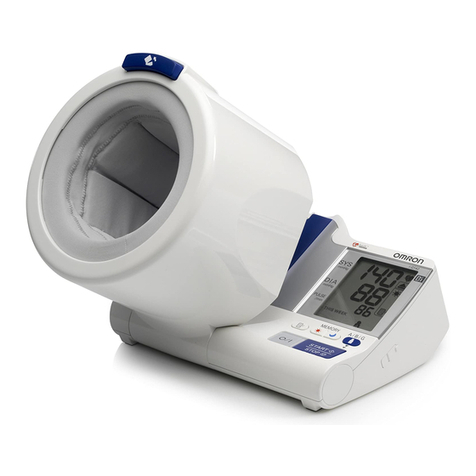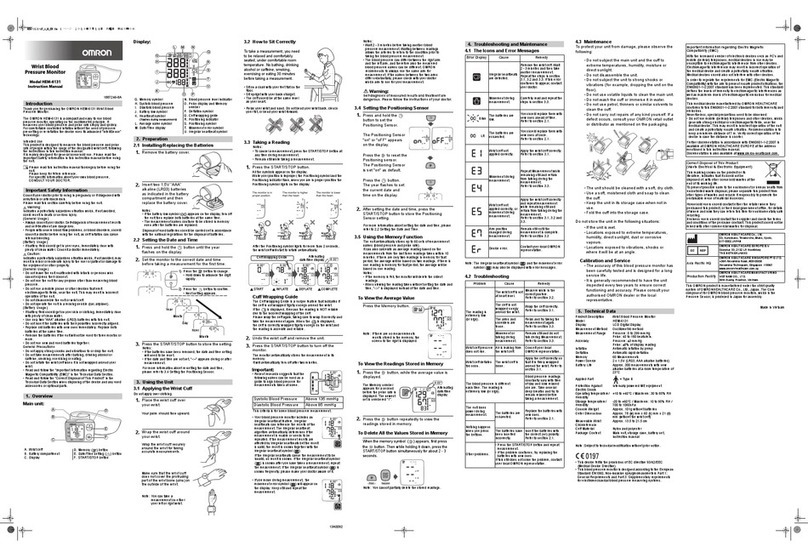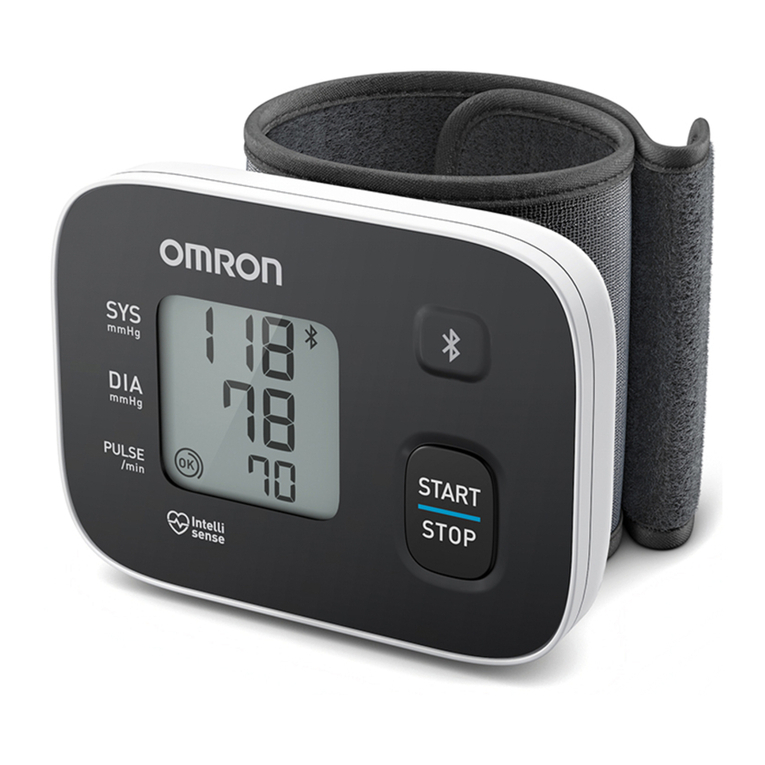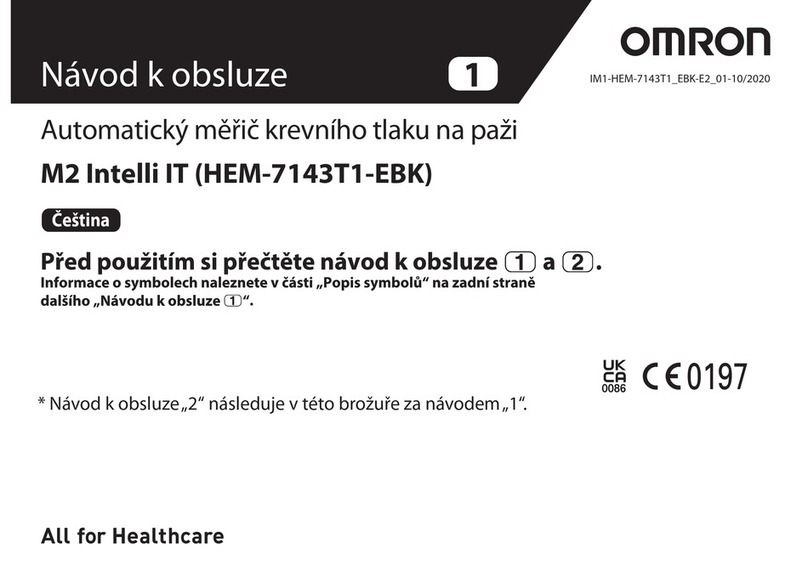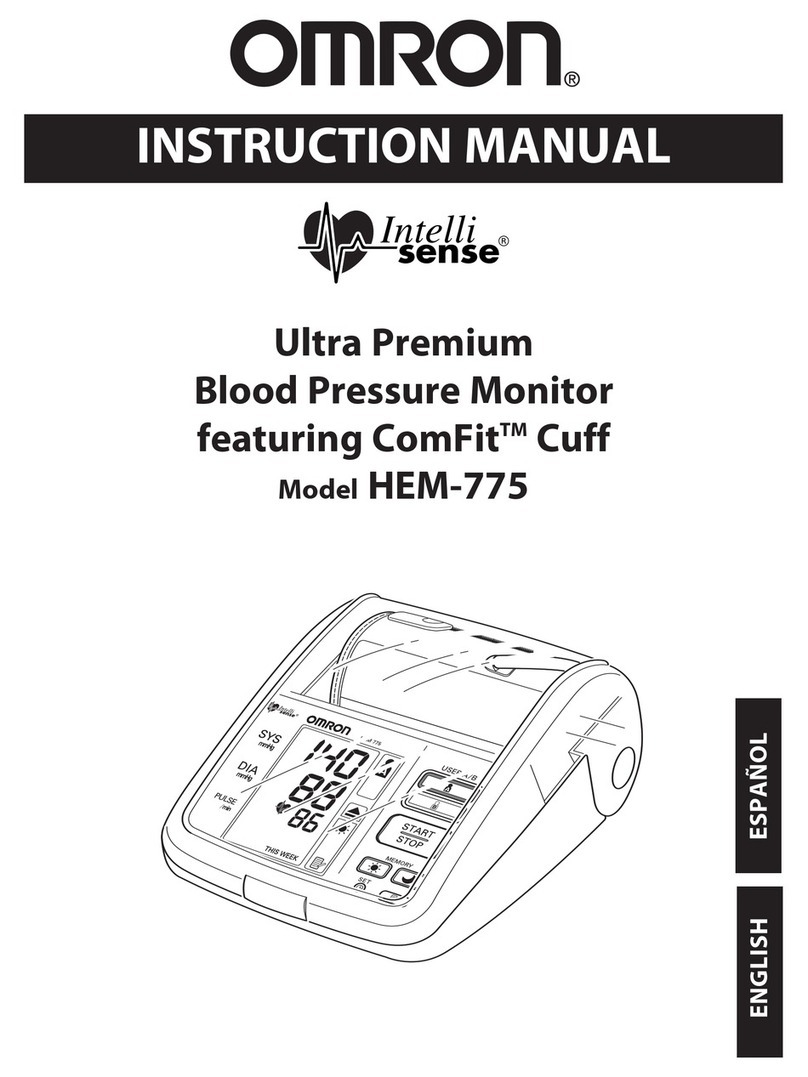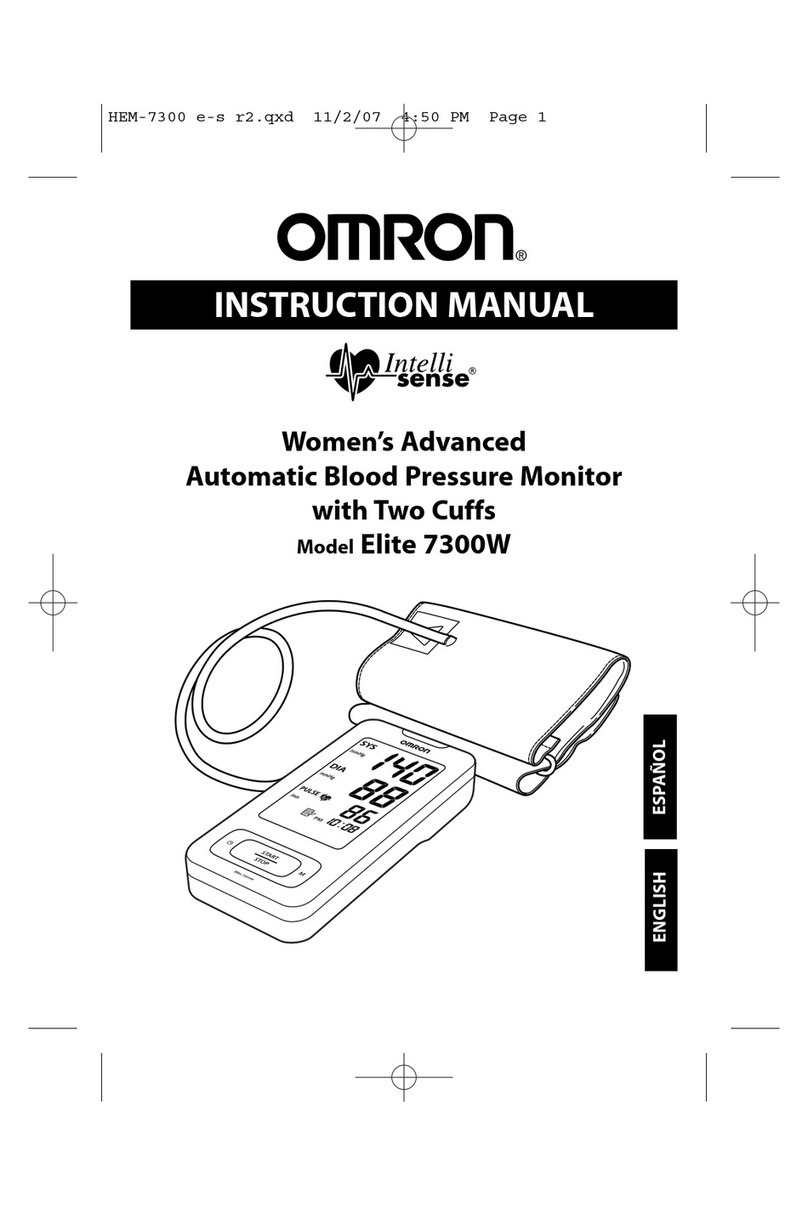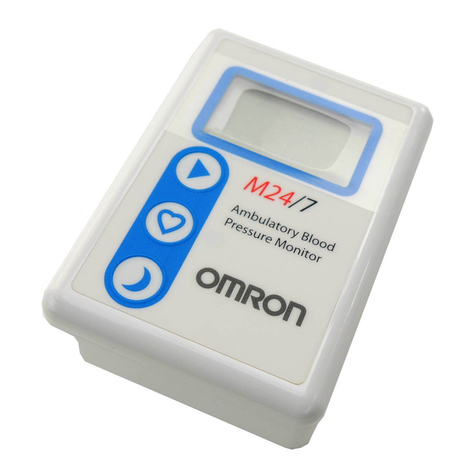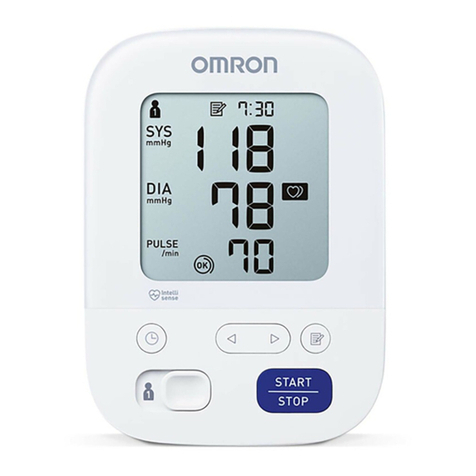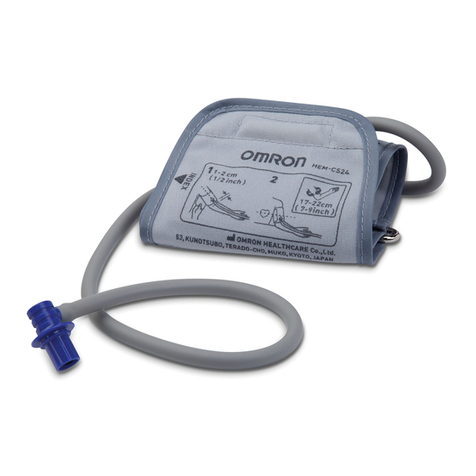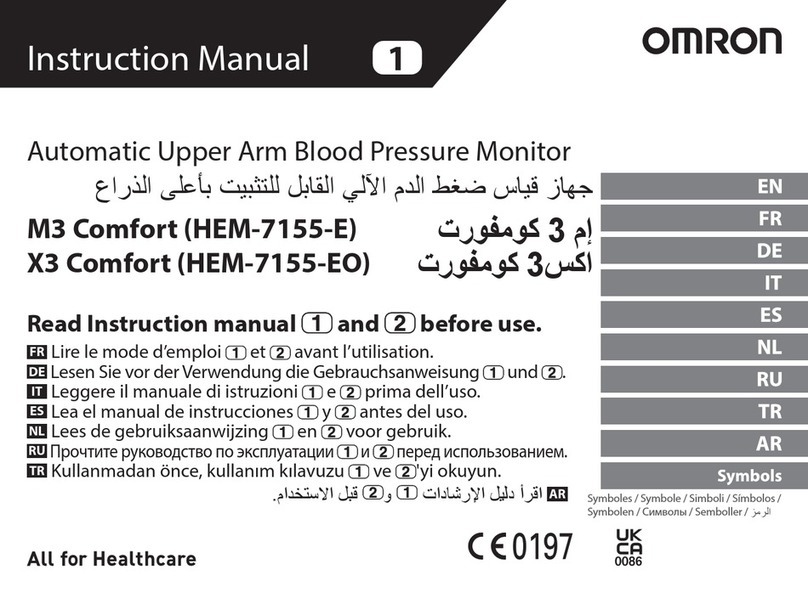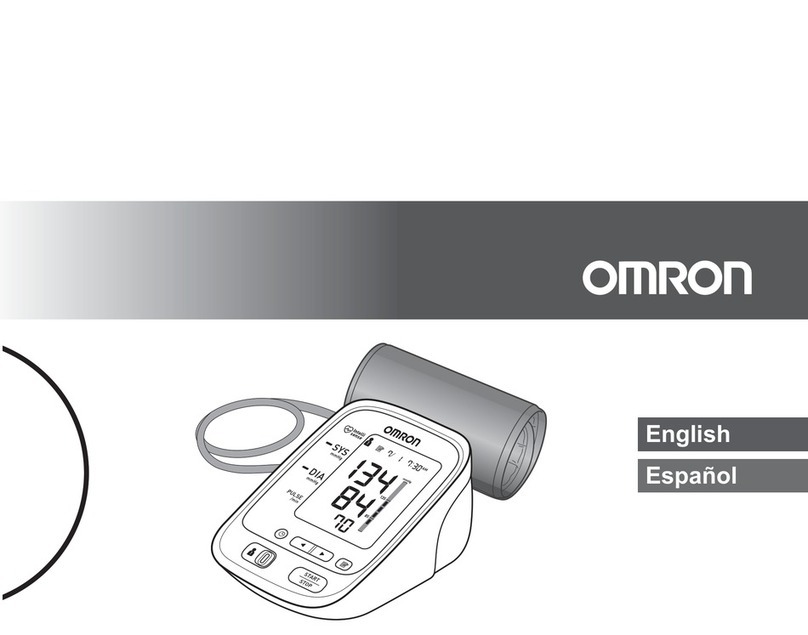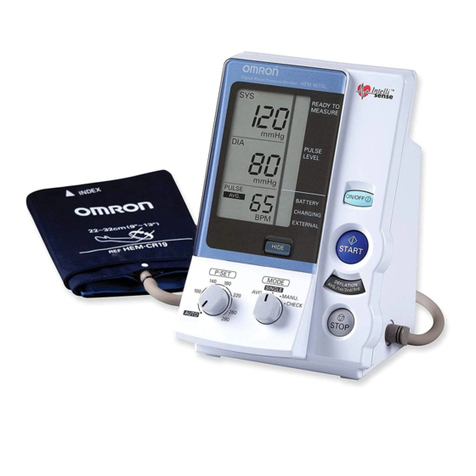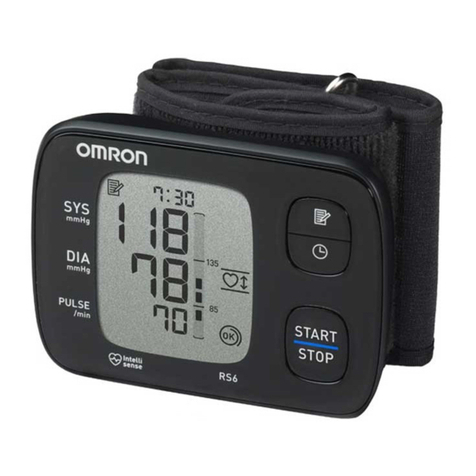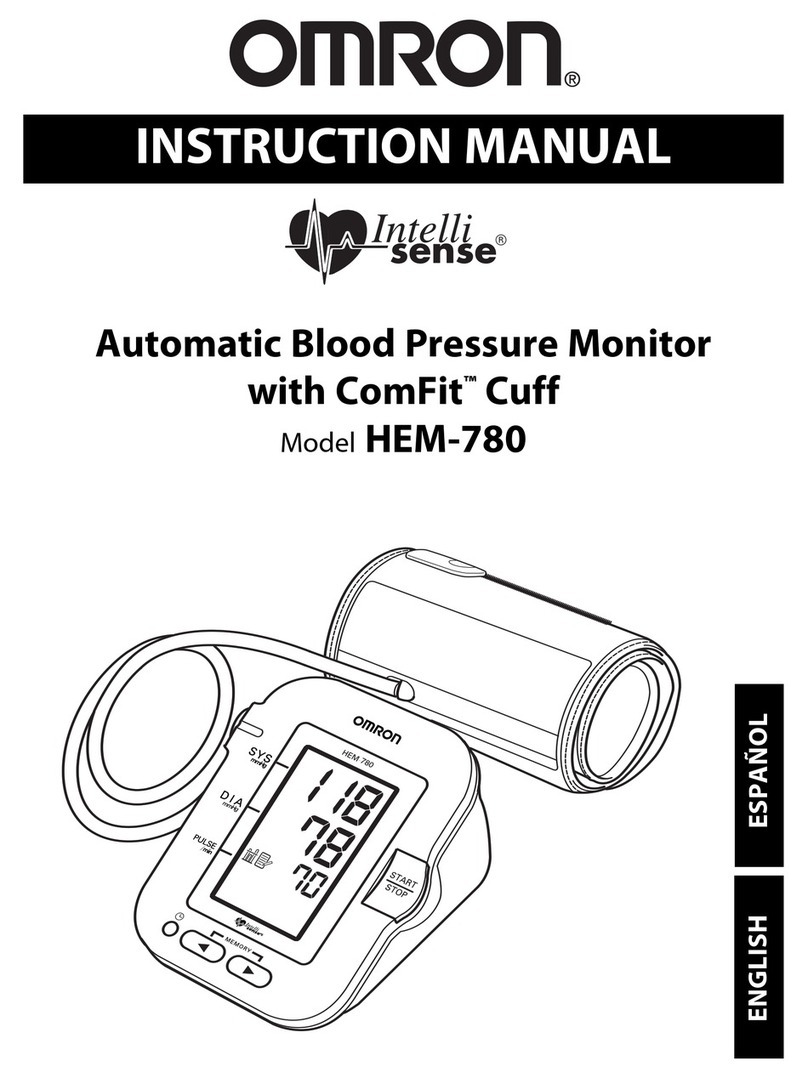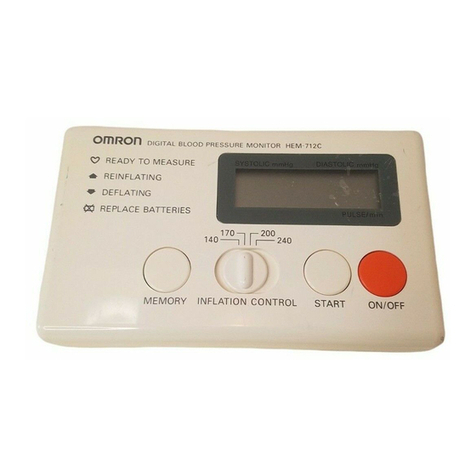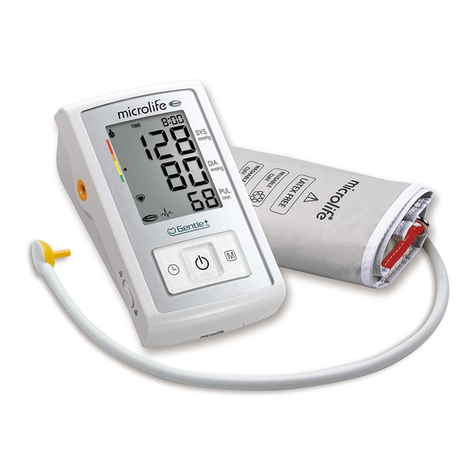
M1 Classic English
9
compartment and insert four new
identical 1.5V alkaline batteries type AA
LR6 batteries.
Spare parts
• Due to high company quality standards,
OMRON considers the main unit as a
non-serviceable part because the need
for proper calibration after replacement
of high tech components.
Attention!Disposal of
batteries and the
OMRON M1 Classic
should be carried out
in accordance with the
national regulations for
the disposal of
electronic products.
8Technical Data
Product name OMRON M1 Classic
Model HEM-442C-E
Display Digital LCD
Measuring range Blood pressure: 0 - 299 mmHg / Pulse: 40 - 180 beats/minute
Accuracy Pressure: ± 3 mmHg
Pulse: ± 5% of display reading
Inflation Manual by inflation bulb
Deflation Automatic pressure release valve
Rapid air release Manual by push button valve
Pressure detection Capacitive pressure sensor
Measuring method Oscilliometric
Power supply 4 x 1.5V alkaline batteries type (LR6) AA
Battery life New batteries will last for approximately 1000 measurements
Operating temperature / humidity +10°C to +40°C / 30% to max. 85% relative humidity
Operating environment Free from excessive vibrations, shocks, magnetic fields, electrical noise, etc.
Storage temperature / humidity -20°C to +60°C /10% to max. 95% relative humidity
Weight Approximately 350 g including cuff, excluding batteries
Outer dimensions Approximately 106 mm (W) x 84 mm (H) x 116 mm (D)
Cuff dimensions Approximately 145 mm (W) x 480 mm (L)
Armcircumference 22 cm to 32 cm
Accessories Cuff, inflation bulb, instruction manual, guarantee card, blood pressure pass
Optional parts Small cuff for arm circumferences between 17 - 22 cm, large cuff for
armcircumferences between 32 - 42 cm.
Note Subject to technical modification without prior notice
=Type B 0197
Manufacturer OMRON HEALTHCARE CO., LTD. Japan
EU-representative OMRON HEALTHCARE EUROPE B.V.
Kruisweg 577, NL-2132 NA Hoofddorp
Made in China
This device fulfils the provisions of the EC directive 93/42/EEC (Medical Device Directive). This blood pressure
monitor is designed according to the European standard EN1060, Non-invasivesphygmomanometers Part1:
General Requirements and Part3: Supplementary requirements for electromechanical blood pressure
measuring systems.
This OMRON product is produced under the strict quality system of OMRON HEALTHCARE CO., LTD.,
Japan. The Core component for OMRON blood pressure monitors, which is the Pressure Sensor, is produced
in Japan.
28070122-03 Manual M1 GB 01-12 28-11-2008 09:19 Pagina 9
